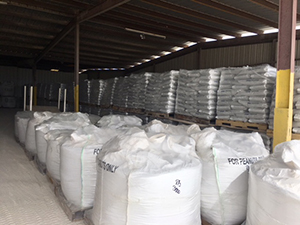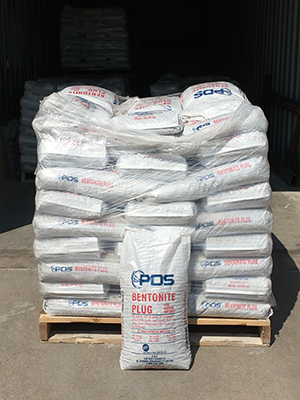What is the Most Common Mistake When Using Sodium Bentonite for Ponds

Liners play an important role in pond construction. Sodium bentonite is celebrated as one of the popular liners for ponds because of its flexibility, affordability, and self-healing properties. While installing sodium bentonite liner is fairly easy, mistakes may happen. When mistakes happen, they undermine the effectiveness of bentonite for ponds. Therefore, knowing the common mistakes beforehand is crucial for successful installation and longevity of the liner. The one cardinal sin that is often committed by pond enthusiasts with sodium bentonite liner is neglecting proper hydration.
Before going into the nitty-gritty, if you are looking to apply sodium bentonite for ponds, we can help. We are the leading suppliers of sodium bentonite for ponds, offering premium, top-notch products. To learn more about our bentonite clay products, contact us at 888-600-6077 or request a quote online.
Why Hydration Matters?
Sodium bentonite is effective when its swelling properties are activated, and this happens when the bentonite gets adequate water. Insufficient hydration to bentonite leads to weak sealing properties, leaving your pond vulnerable to water leakages. When bentonite is sufficiently hydrated, it develops into an impermeable barrier, protecting the pond from leakages.
In addition to this, proper hydration facilitates the even distribution of the bentonite clay across the pond basin. When there is even distribution, there is comprehensive coverage of the seal across the pond.
That's not all. Insufficient hydration and leaving the bentonite to dry leads to cracks in the ponds causing the water to seep into the soil and surrounding areas. On the other hand, proper hydration maintains the clay's pliability, minimizing the risks of water leakage and providing long-lasting protection.

Best Practices to Hydrate Sodium Bentonite for Ponds
Here are some additional steps you should take into consideration when applying bentonite pond sealant to avoid common application mistakes:
- Preparation is key: Make sure you create the optimal foundation for applying sodium bentonite. Remove any debris and use mechanical equipment, such as tractor-mounted tillers, to mix the bentonite with the soil. This ensures the bentonite is evenly distributed across the soil.
- Add water gradually to the bentonite: After distributing the bentonite evenly, slowly introduce water to the bentonite layer. This ensures that the bentonite particles absorb water evenly, ensuring hydration across the layer. Remember to use clean and non-chlorinated water for hydration.
- Monitor the moisture levels: Once the water is added to the layer, monitor the water levels. See that the layer has a moisture content of about 12% to 15%. If there is excess content, adjust the water levels accordingly.
- Perform a sealing test: To determine the effectiveness of the hydrated sodium bentonite, conduct a sealing test by filling the pond with water and observing for leakage. If leakage is found, add additional water or bentonite to seal the cracks.
- Consult a professional: If you are unsure about attempting the hydration process on your own, seek the help of a professional. They can provide insightful advice and assist you.
Contact Us to Learn More Tips to Apply Sodium Bentonite for Ponds
If you are looking for tips to apply sodium bentonite to your pond or need to purchase bulk bentonite clay products, we can help. Call us today to learn how we can help ensure the successful hydration of sodium bentonite for ponds.










